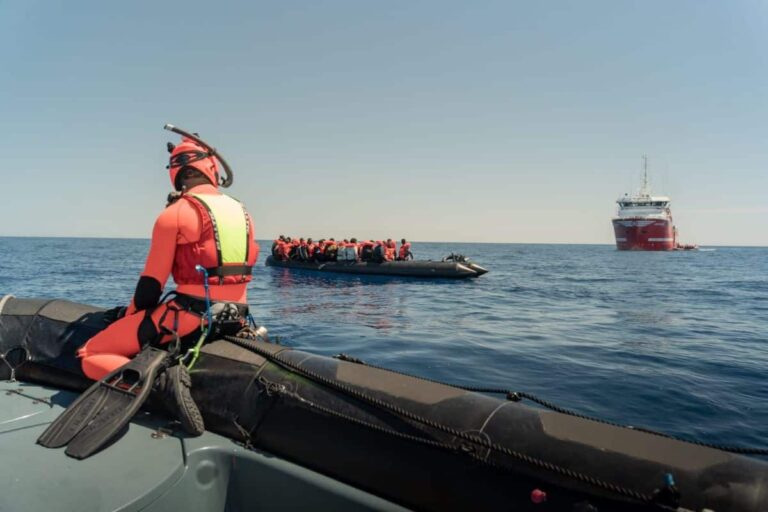Did you know that between 2000 and 2019, the number of international migrants worldwide increased from 173 million to 281 million, a dramatic rise of 62%? With global migration increasing exponentially, what are the major global migration routes?
Moreover, who are the people undertaking these dangerous migration routes? Let’s understand some of the major global migration routes and find the answers to these questions.
Table of Contents
Major global migration routes in 2023
Below listed are the seven major global migration routes:
1. The Mediterranean route
The Mediterranean route is one of the well-known migration routes that span from Africa, the Middle East, and Asia to Europe. Those who choose this route, they typically originate from countries such as Libya, Tunisia, Egypt, and Algeria and make their way to destinations such as Italy, Malta, Greece, or Spain.
The Mediterranean Route is one of the most perilous and deadly migration routes in the world, with thousands of people perishing every year while attempting to cross the Mediterranean Sea. This perilous journey is often driven by war, political instability, poverty, and a lack of economic opportunities in the migrants’ homelands. Migrants travel in overcrowded and unsafe boats with little food or water, making them particularly vulnerable to drowning and starvation during the journey.
2. The Eastern Mediterranean route
The Eastern Mediterranean Global Migration Route is an increasingly popular route for migrants looking to reach Europe from the Middle East. Starting in Turkey, it takes migrants through the Aegean Sea to Greece or Cyprus. Unfortunately, this treacherous journey often costs a fortune and carries many risks that can cost lives.
The Eastern Mediterranean route is particularly popular among people escaping war-torn countries like Syria and Iraq. Those who take on the journey must rely on smugglers, who often charge exorbitant fees. The boats these smugglers use are rarely seaworthy, leaving migrants to brave the waves in overcrowded vessels.
As a result, many have drowned or been left stranded in refugee camps along the way. Despite the risks involved, they take on this journey in search of a better life in Europe.
3. The Central American route
Central American migration to the United States is a complex and perilous journey. Migrants from Honduras, Guatemala, and El Salvador make up the majority of those traveling along the Central American route.
The most common form of transportation for these migrants is known as “La Bestia” – cargo trains that are notorious for accidents and robberies. Along the way, migrants risk being preyed upon by criminal gangs and cartels who demand payment for safe passage.
Many migrants, fleeing violence, poverty, and political instability in their home countries, bravely undertake a dangerous route through Mexico to reach the United States.
4. The South Asian route
Every day, thousands of people in countries such as Afghanistan, Pakistan, Bangladesh, and India leave their homes through this route in search of better economic opportunities and a safer future abroad. It is a treacherous journey for many migrants from the region.
Unfortunately, this dangerous route to Europe is often full of risks and exploitative practices. Migrants have to travel in cramped and overcrowded vehicles, making them vulnerable to accidents along the way. Furthermore, their journey through Iran and Turkey may involve bribery or exploitation by traffickers.
5. The West African route
The West African Global Migration Route is the journey for migrants fleeing poverty, unemployment, and political instability. Starting in countries such as Nigeria, Ghana, Senegal, and Ivory Coast, this route leads to Europe via the Sahara Desert. These migrants travel long distances in overcrowded smugglers’ trucks with little food or water – risking their lives in an attempt to seek a better future.
Once in Libya, migrants face more hardship as they must cross the treacherous Mediterranean Sea on overcrowded boats or rafts. Human traffickers demand payment for passage and frequently abuse and exploit those who cannot pay. The journey is further hindered by government policies that limit legal migration options, leaving many with no choice but to try and cross the Mediterranean.
6. The Eastern routes
The Eastern Global Migration Route is an arduous journey undertaken by many desperate migrants from the Middle East and Central Asia in search of refuge. It is a dangerous route through hostile terrain, with some travelers risking their lives for a chance at safety.
For these refugees, the stakes are high as they embark on their treacherous journey across seas and through the land, often in overcrowded boats or trucks. Many have lost their lives while attempting to cross the Mediterranean Sea, with others falling prey to human traffickers and smugglers.
7. The Russian route
The Russian migration route starts in Central Asia, including Uzbekistan, Tajikistan, and Kyrgyzstan and ends in Russia. Migrants from these countries often travel to Russia in search of work and better economic opportunities.
The route is often fraught with danger. Many migrants take to crowded buses and trains in an attempt to cross the Russian border without detection. This can be risky, as they face possible detention or deportation if caught by authorities.
Global migration, a dramatic rise in 2023
The dramatic rise in global migration is driven by many economic, political, and social factors. Moreover, all of these routes are filled with life-threatening dangers for immigrants.
However, economic opportunities and political instability are what force these people to switch to the perilous migration routes. For example, many Latin Americans migrate to North America in search of better economic prospects. Africans often migrate to Europe to escape political instability and conflict.
Nevertheless, the phenomenon of global migration is likely to continue to shape the world’s population trends in the coming years.
Read also: Demographic bombshell in Europe: Italy plunges, Germany resists falling birth rate












